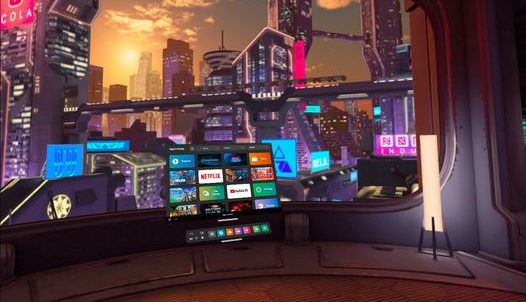
Imagine a virtual future where you sit at your living room coffee table, whip out a pair of VR glasses, and suddenly all your work files float in front of you, the news flashes in a corner and a co-worker pops up to chat in hologram form, like something out of Star Wars. After work, you select a virtual outfit and hop into a virtual card game, then invite your friends to hang afterward in a virtual house of your own creation. Or you slip on your headset and gawk at Yosemite’s Half Dome in stunning 3D.
This is the anything-is-possible future that tech corporations, particularly Meta (formerly Facebook), plan for humanity. It’s been envisioned in movies like “Ready Player One,” and over the last few years, it sounds more and more possible. Meta has pushed a kind of digital world where we live, work, trade and socialize, just like we do in the real world.
These companies want you to immerse yourself into their digital ecosystem — their metaverse — and their plans could go one of two ways: boom, or bust.
Boom
In the span of a few years, virtual and augmented reality has gone from experimental to mainstream. More people now have access to immersive virtual worlds and experiences than ever before, thanks in large part to the decreasing price of VR. When the first mainstream VR headset, the Oculus Rift, came out in 2016, its introductory price was $600; now you can enter the market with Meta’s standalone wireless Quest 2 with PC compatibility for half the price. Video game company Valve’s Index unit offers much more advanced features, such as finger tracking and full-body VR, but is still semi-affordable at $999.
The metaverse will also increase in popularity as users recognize it’s not just about a parallel reality but about living in fantasy.
Since the late 1990s, massively multiplayer online role playing games (MMORPGs) like “World of Warcraft” have offered players a chance to fight, adventure, go on quests and experience life in a fantasy world with other people from a third-person perspective. But now with virtual reality and the metaverse, players can participate in the first-person. What if you’re the one crafting that cool new armor set, casting that spell and fighting all those goblins?
As more people of all income levels can have fun both in virtual reality and virtual fantasy, the metaverse will grow.
Bust
Despite all that coolness and convenience, there are issues with some visions for the metaverse, issues that could make it unacceptable to the mass market.
First is that metaverse economies are built on the blockchain, a system that provides the foundation for cryptocurrency and non-fungible tokens (NFTs) so that users can buy, sell and trade goods and services without traditional banking and currency. But cryptocurrency needs to be “mined” — and requires extraordinary natural resources to do so. According to Cambridge University, in 2021, Bitcoin used more electricity than the Netherlands and Argentina. Moving to cryptocurrency is terrible for the environment, which will limit interest with young people and those who care about the world.
In addition, Meta’s Metaverse is “an attempt to capitalize off a growing market and to utilize their own NFT and altcoin technology to create a virtual economy,” one that Meta will have exclusive control over, said Lex Pulos, Santa Rosa Junior College game design instructor. The company will control everything you purchase, including virtual property. If Meta so chooses, it can strip you of your virtual wealth. Everything you own in the metaverse is digital. If the service goes under or the servers go out, users can say goodbye to all their virtual valuables, or at least access to them.
Users are also wary of Meta because of the way the company gathers information on its users to sell without informing the customer about how it is used. It is possible the company’s Metaverse will not succeed because users will stay away due to the parent company’s untrustworthiness.
The metaverse has been attempted before. In 2003, San Francisco-based Linden Labs started “Second Life,” a virtual world that groups like Dell and the GOP used for virtual meetings. “Second Life” and its Linden Dollar reached a $64 million GDP, but the masses didn’t take to “Second Life” because Linden Labs never adapted the platform to what most people used it for: games and social activity. Not virtual real estate and business meetings.
The metaverse has also been seen in movies. In “Ready Player One,” the global economy and society moved into a virtual world called the OASIS to escape a sad, broken reality. A greedy corporation called IOI aimed to take over the OASIS to control the world. The protagonist won in the end and realized that people needed to spend more time in reality.
Just like virtual reality couldn’t compete with real life in “Ready Player One,” it can’t compete in the real world either.



